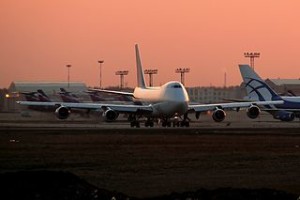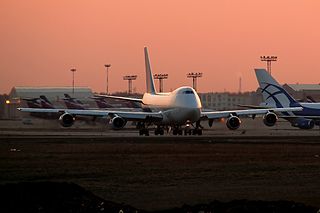 Air cargo made a significant acceleration in demand in 2014, gathering momentum particularly over the last few months to end the year on a positive note, according to full-year data released by the International Air Transport Association (IATA).
Air cargo made a significant acceleration in demand in 2014, gathering momentum particularly over the last few months to end the year on a positive note, according to full-year data released by the International Air Transport Association (IATA).
Majority of the growth, however, was in the Asia-Pacific and Middle East regions, which respectively contributed 46% and 29% of the expansion in freight tonne kilometers (FTKs). Growth was recorded in all other regions, but was particularly weak in Latin America.
Measured by FTKs, the air cargo market saw a 4.5% demand growth in 2014 compared to 2013. That is a significant acceleration from the 1.4% recorded in 2013 over 2012, IATA data indicated.
“After several years of stagnation, the air cargo business is growing again. This is largely being driven by the uptick in world trade over the second half of 2014. Recent concerns over the health of the global economy and a corresponding fall in business confidence have not yet impacted air cargo. But it is a downside risk that will need to be watched carefully as we move through 2015,” said Tony Tyler, IATA’s director general and CEO.
Growth expanded in December 2014 to 4.9% compared to December 2013.
By regional performance, Asia-Pacific carriers grew 5.9% last December compared to December 2013, and 5.4% for 2014 as a whole. Volumes benefitted from increasing import demand and continuing manufacturing strength. Japanese and Chinese markets were particularly important contributors. Overall in 2014, capacity expanded 5.7% leading to a slight fall in load factor to 55.4%, although this remains the strongest load factor of any region.
North American airlines reported demand growth of 2.8% in December and 2.4% for 2014 as a whole. After a slow, weather-affected start to the year, growth accelerated, driven by import and export demand. Carriers in the region cut back capacity in 2014 by 0.5%, helping to underpin the load factor (35.3%).
European airlines saw FTKs expand 2.3% in December, and by 2% in 2014 overall. The Eurozone remains weak and close to recession, with the effects of Russian sanctions also having an impact. Load factors also fell in 2014 as capacity expanded 3%.
Middle Eastern carriers enjoyed the strongest growth of any region, expanding 11.3% in December and 11% for the year as a whole. Airlines in the region have extended their networks and grown capacity by 11.1% to make the Middle East a hub for freight traffic. In fact they have been responsible for over 37% of the total increase in global freight capacity in 2014.
Latin American airlines reported FTKs falling 4.5% in December. This was the only region to report a decline. The picture for 2014 as a whole was growth of 0.1%. Latin American volumes have been affected by economic slowdown across the region, particularly in Brazil and Argentina. Capacity grew by 0.3% in 2014.
African carriers expanded FTKs by 12.2% in December and 6.7% for the year as a whole. Although major economies Nigeria and South Africa underperformed during parts of 2014, regional trade activity held up, supporting demand for air transport of goods. Capacity rose just 0.9% for the year as a whole, helping to strengthen the load factor.
Photo: Anton Bannikov





